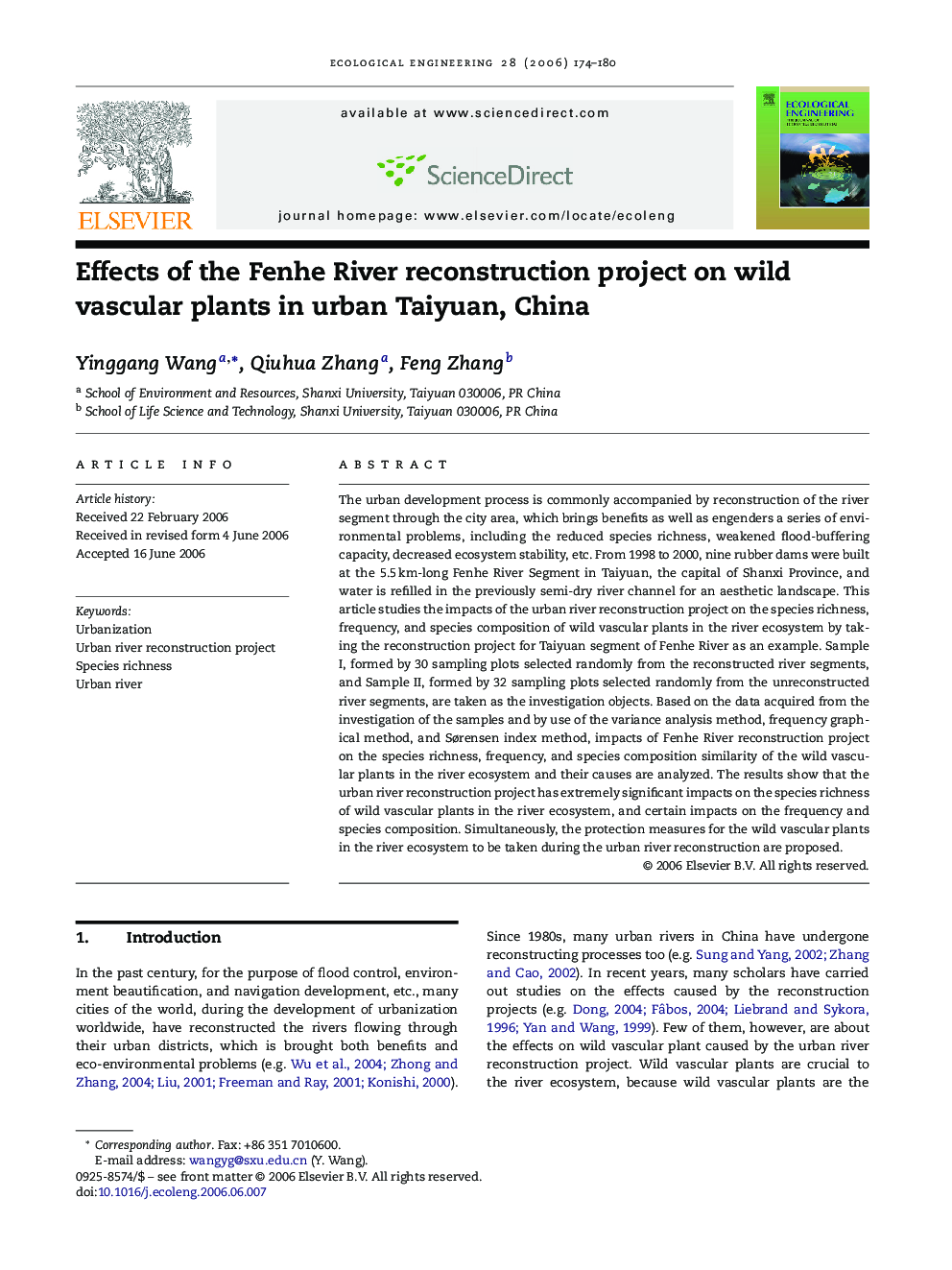| Article ID | Journal | Published Year | Pages | File Type |
|---|---|---|---|---|
| 4391226 | Ecological Engineering | 2006 | 7 Pages |
The urban development process is commonly accompanied by reconstruction of the river segment through the city area, which brings benefits as well as engenders a series of environmental problems, including the reduced species richness, weakened flood-buffering capacity, decreased ecosystem stability, etc. From 1998 to 2000, nine rubber dams were built at the 5.5 km-long Fenhe River Segment in Taiyuan, the capital of Shanxi Province, and water is refilled in the previously semi-dry river channel for an aesthetic landscape. This article studies the impacts of the urban river reconstruction project on the species richness, frequency, and species composition of wild vascular plants in the river ecosystem by taking the reconstruction project for Taiyuan segment of Fenhe River as an example. Sample I, formed by 30 sampling plots selected randomly from the reconstructed river segments, and Sample II, formed by 32 sampling plots selected randomly from the unreconstructed river segments, are taken as the investigation objects. Based on the data acquired from the investigation of the samples and by use of the variance analysis method, frequency graphical method, and Sørensen index method, impacts of Fenhe River reconstruction project on the species richness, frequency, and species composition similarity of the wild vascular plants in the river ecosystem and their causes are analyzed. The results show that the urban river reconstruction project has extremely significant impacts on the species richness of wild vascular plants in the river ecosystem, and certain impacts on the frequency and species composition. Simultaneously, the protection measures for the wild vascular plants in the river ecosystem to be taken during the urban river reconstruction are proposed.
